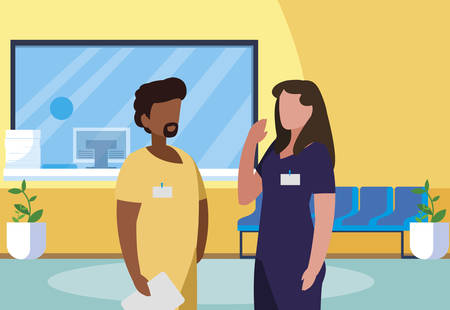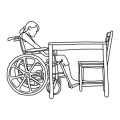Introduction to Community Rehabilitation Services in the UK
Community rehabilitation services play a vital role in the UK’s healthcare landscape, supporting individuals to regain their independence and improve their quality of life following illness, injury, or surgery. These services are designed to help people recover physical, cognitive, and emotional abilities so they can return to daily activities and participate fully in their communities. Delivered both through the National Health Service (NHS) and private providers, community rehabilitation encompasses a range of therapies and support tailored to meet individual needs. The significance of these services is especially pronounced within the context of the UK’s commitment to integrated, patient-centred care, where emphasis is placed on enabling people to stay in their own homes for as long as possible and reduce unnecessary hospital admissions. By bridging the gap between acute hospital care and long-term support at home or in the community, rehabilitation professionals—such as physiotherapists, occupational therapists, speech and language therapists, and rehabilitation assistants—work collaboratively with patients and families. This ensures that recovery is holistic and empowers individuals to achieve their maximum potential within the supportive framework of British healthcare.
2. The NHS Approach to Community Rehabilitation
The National Health Service (NHS) in the UK plays a pivotal role in providing community rehabilitation services designed to support individuals recovering from illness, injury, or surgery. These services aim to help people regain independence and improve their quality of life within their own homes or local communities. Below is an overview of how NHS community rehabilitation operates, including the referral process, multidisciplinary team involvement, and typical patient pathways.
Referral Process
Accessing community rehabilitation through the NHS typically begins with a referral from a healthcare professional, such as a GP, hospital consultant, or social worker. Referrals can be made for a wide range of conditions, including stroke, neurological disorders, musculoskeletal injuries, and after major surgeries. In some regions, patients or carers may also self-refer if they meet specific criteria.
| Step | Description |
|---|---|
| 1. Initial Assessment | A healthcare professional assesses the patient’s needs and suitability for community rehabilitation. |
| 2. Referral Submission | The referring professional submits a formal referral to the local community rehab team. |
| 3. Triage & Allocation | The referral is reviewed and allocated to the appropriate service or specialist team. |
| 4. Care Planning | An individualised rehabilitation plan is developed in collaboration with the patient. |
Multidisciplinary Teams (MDTs)
NHS community rehabilitation relies on multidisciplinary teams to deliver holistic care tailored to each patient’s unique needs. MDTs often include:
- Physiotherapists: Focus on improving mobility and physical function.
- Occupational Therapists: Support daily living skills and adaptations at home.
- Speech and Language Therapists: Assist with communication or swallowing difficulties.
- Nurses: Provide ongoing medical care and monitoring.
- Dietitians: Advise on nutrition for recovery.
- Clinical Psychologists: Address emotional and psychological wellbeing.
- Social Workers: Help coordinate community resources and support networks.
Typical Patient Pathways
The journey through NHS community rehabilitation is highly individualised but generally follows these stages:
- Initial Assessment: Conducted by an MDT member to establish baseline function and goals.
- Goal Setting: Collaborative development of personalised rehabilitation goals with the patient and family.
- Intervention Phase: Delivery of tailored therapies—either at home, in clinics, or via virtual sessions when suitable.
- Review & Adjustment: Regular reviews to monitor progress and adjust interventions as needed.
- Discharge Planning: Preparation for independence or transition to other support services if required.
NHS Community Rehabilitation: Key Features Summary
| Feature | Description |
|---|---|
| No direct cost to patients | Treatment funded by the NHS without private fees for eligible individuals. |
| Focus on equity of access | Aims to provide consistent standards of care regardless of background or financial status. |
| Centrally coordinated care | Services are coordinated locally within NHS Trusts for seamless care transitions. |
PATIENT-CENTRED CARE AT THE HEART OF THE NHS MODEL
The NHS approach prioritises patient choice, dignity, and active involvement throughout the rehabilitation process, ensuring that care plans reflect individual goals while drawing upon the expertise of multidisciplinary professionals working together for optimal outcomes.

3. Private Community Rehabilitation Services
Private community rehabilitation services in the UK play a crucial role alongside NHS offerings, providing patients with greater choice and flexibility in their care. These private providers range from large national companies to smaller local clinics and independent therapists. Funding for private rehabilitation typically comes from self-pay, private health insurance, or employer-sponsored schemes, which means access is generally quicker compared to NHS routes but may be limited by cost.
The types of services available within the private sector are diverse and can include physiotherapy, occupational therapy, speech and language therapy, and psychological support. Many providers offer tailored programmes for specific conditions such as neurological rehabilitation, musculoskeletal injuries, or post-surgical recovery. Private practitioners often emphasise personalised treatment plans, shorter waiting times, and extended appointment durations.
Accessing private community rehabilitation is usually straightforward. Patients can refer themselves directly to a provider without needing a GP referral, although some insurers may require one. Appointments can often be scheduled at flexible times and in locations convenient to the patient, whether at home, in a clinic, or even virtually via telehealth platforms. This flexibility and responsiveness are significant advantages for those seeking rapid intervention or specialised care not readily available on the NHS.
4. Key Differences Between NHS and Private Rehabilitation Services
When considering community rehabilitation services in the UK, it is important to understand the distinct differences between NHS and private options. Both systems aim to provide high-quality care, but they differ significantly in several core aspects such as accessibility, cost, waiting times, and patient choice. Below is a detailed comparison of these fundamental elements:
| Aspect | NHS Community Rehabilitation | Private Community Rehabilitation |
|---|---|---|
| Accessibility | Available to all UK residents; referral usually required from a GP or NHS consultant. | Accessible to anyone who can afford it; self-referral is often possible, with fewer bureaucratic barriers. |
| Cost | Free at the point of delivery, funded through taxation. | Fees apply for assessment and ongoing treatment sessions; costs vary depending on provider and location. |
| Waiting Times | Can be lengthy due to high demand and limited resources; urgent cases are prioritised. | Generally much shorter waiting times; appointments can often be scheduled within days. |
| Patient Choice | Limited choice of specialists and locations; patients are usually allocated to local services. | Wider choice of therapists, treatment approaches, and clinic locations tailored to individual preferences. |
What Do These Differences Mean for Patients?
NHS Services: Comprehensive Yet Constrained
The NHS offers a comprehensive safety net for all individuals, ensuring that no one is excluded from vital rehabilitation support. However, service delivery may be restricted by funding and workforce limitations, which can affect waiting times and limit options regarding specialist providers or therapy settings.
Key Point:
NHS community rehab is ideal for those seeking cost-free care and who do not require urgent intervention or highly specialised therapies.
Private Services: Flexible But Costly
Private rehabilitation providers typically offer more immediate access, flexible appointment scheduling, and greater personalisation. This can make a significant difference for individuals seeking rapid improvement or specific therapeutic expertise. However, this flexibility comes with financial implications that may not be feasible for every patient.
Key Point:
If convenience, speed, or specialist care are priorities—and budget allows—private rehabilitation may be preferable.
Together, both sectors play vital roles within the UK’s healthcare landscape. Many patients find value in combining NHS and private services to achieve optimal outcomes tailored to their needs and circumstances.
5. Patient Experience and Outcomes
When considering community rehabilitation services in the UK, patient experience and outcomes are fundamental measures of quality. Both NHS and private providers strive to deliver effective, patient-centred care, but there are notable differences in how satisfaction and outcomes are achieved and reported.
Patient Satisfaction
NHS community rehabilitation services are widely accessible, with many patients valuing the continuity and integration of care within the broader health system. However, some report challenges related to waiting times, limited appointment availability, and resource constraints. In contrast, private providers often excel in offering shorter wait times, greater flexibility in scheduling, and more personalised attention, which can contribute to higher levels of patient satisfaction for those able to access these services.
Quality of Care
Quality of care is consistently prioritised across both sectors. The NHS is guided by national standards and regular audits to ensure safety and effectiveness, but service delivery may be impacted by high demand. Private rehabilitation providers typically offer a wider range of therapies and innovative approaches, often with enhanced facilities and more one-to-one sessions. Nevertheless, both sectors employ highly trained professionals committed to supporting recovery and independence.
Common Outcomes
Outcomes from community rehabilitation—such as improved mobility, enhanced daily functioning, and better quality of life—are generally positive in both NHS and private settings. Research suggests that while clinical improvements are comparable, patient-reported experiences may be more favourable in private care due to increased choice and responsiveness. Ultimately, individual preferences, clinical needs, and financial considerations play a significant role in determining the best pathway for each patient.
6. Accessing Community Rehabilitation: Practical Considerations
For individuals and families navigating community rehabilitation in the UK, understanding how to access services and make informed choices between NHS and private options is crucial. The process can feel overwhelming, especially when facing health challenges or supporting a loved one’s recovery. Below, we offer practical guidance tailored to the realities of the UK’s healthcare landscape.
Guidance for Accessing Support
Begin by consulting your GP or primary care provider, as they are often the first point of contact for accessing NHS community rehabilitation services. Your GP can refer you to local multidisciplinary teams or specialist clinics based on your specific needs, whether it’s post-surgery recovery, neurological rehabilitation, or ongoing support for long-term conditions. If you wish to explore private options, many providers accept self-referrals, allowing you to contact them directly for assessments and treatment plans.
Choosing Between NHS and Private Rehabilitation
When deciding between NHS and private services, consider factors such as waiting times, the range of therapies available, location, and personal financial circumstances. NHS services are free at the point of delivery but may have longer waiting lists and more limited choices regarding appointment times or therapy types. Private rehabilitation often offers greater flexibility, shorter waits, and personalised programmes but comes with associated costs that vary depending on the provider and intensity of care needed.
Current Challenges and Barriers
Despite the strengths of both systems, there are common barriers faced by those seeking community rehabilitation. NHS services can be under pressure due to high demand and limited resources, sometimes resulting in delays or reduced session frequency. Geographical disparities mean that access to specialised services may vary across regions. For private care, affordability remains a significant concern for many families. It’s also important to ensure any private provider is properly regulated—look for accreditation from bodies such as the Care Quality Commission (CQC).
Empowering Informed Decisions
The most effective approach involves gathering information about local services, discussing options with healthcare professionals, and considering personal priorities regarding convenience, cost, and quality of care. Patient advocacy groups and charities are valuable sources of advice and may help guide you through both NHS pathways and private alternatives. Ultimately, making an informed choice ensures that individuals receive the right level of support tailored to their unique rehabilitation journey.


